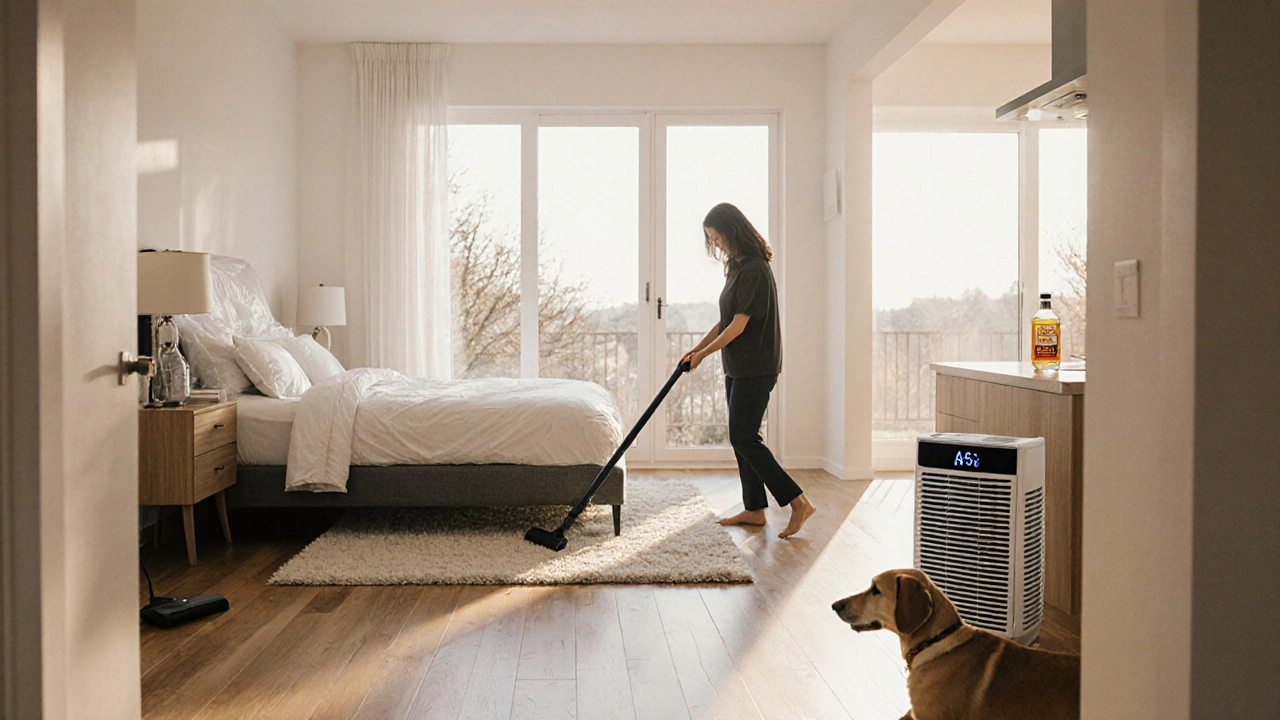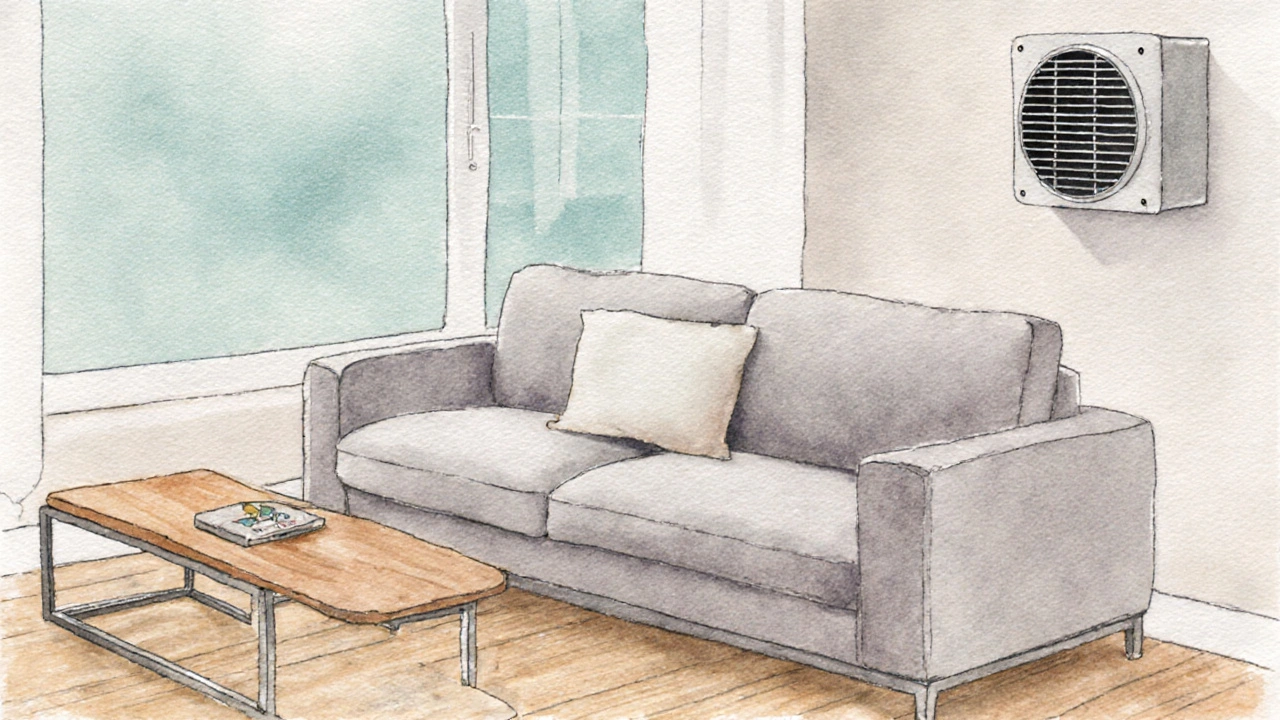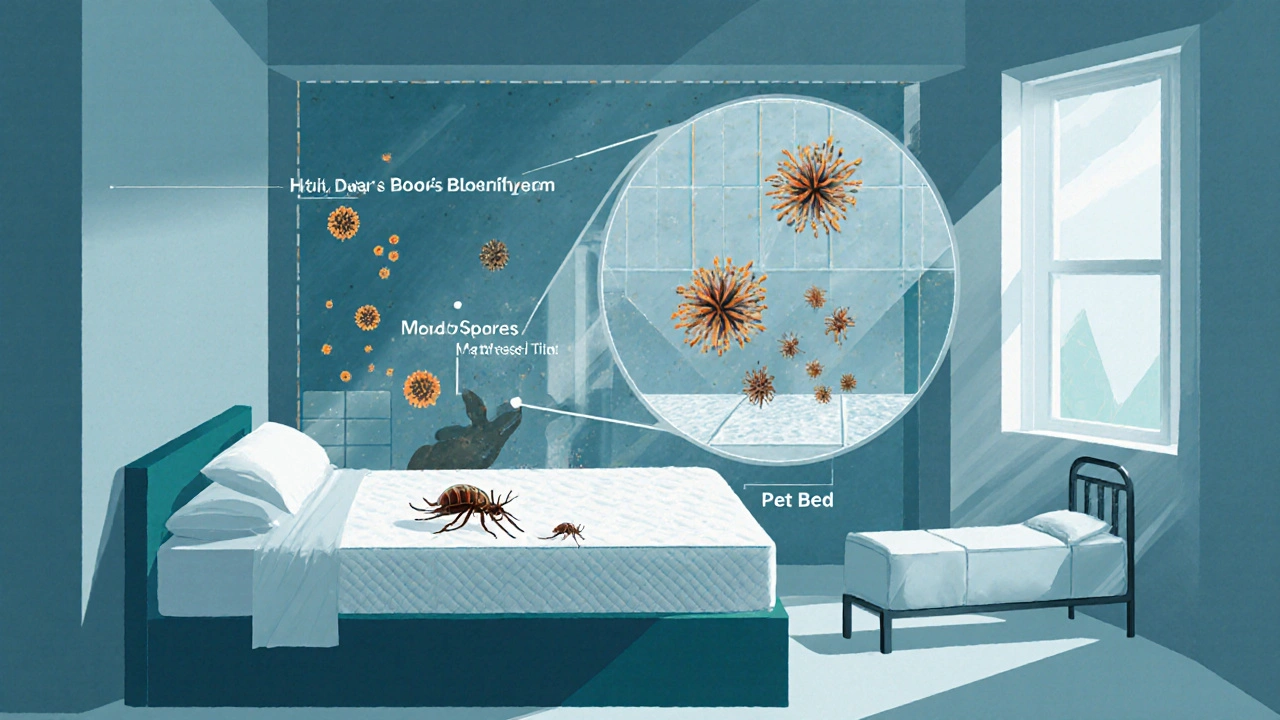Allergy Filter Finder
Find Your Best Filter
Select your home's conditions to determine the most effective air filter for your allergy needs.
Recommended Filter Type
Why This Filter?
Allergen Capture
Lifespan
Best For
Why This Recommendation?
How This Works
Enter your home conditions to see which air filter best suits your allergy needs. The tool considers humidity levels, pet exposure, and your allergy severity to recommend the most effective filter type.
The table in the article shows the filter performance comparison.
Living with allergies can turn everyday chores into a daily battle. The good news? You can dramatically cut down on triggers by tweaking a few habits and picking the right products. Below is a hands‑on plan that will help you turn any house into an allergy safe home where breath feels easier and skin stays calm.
Know What’s Lurking Inside Your Walls
Before you start swapping out items, it helps to recognize the usual suspects that hide in homes:
- Dust mites are microscopic arachnids that love warm, humid places. Their bodies and droppings carry proteins that spark sneezing, wheezing, and itchy eyes.
- Mold spores thrive on damp surfaces like bathroom tiles or leaky windows. When inhaled they can aggravate asthma and cause sinus irritation.
- Pet dander consists of tiny skin flakes and saliva proteins that float in the air long after a pet has brushed past.
- Pollen drifts indoors through open windows, doors, and even on clothing, adding a seasonal punch to indoor allergy loads.
Knowing where they come from points you straight to the most effective actions.
Crush Dust Mites and Keep Mold at Bay
Dust mites love bedding, upholstered furniture, and carpet fibers. Here’s how to break their life cycle:
- Set indoor humidity to 40‑50%. Use a hygrometer and a dehumidifier if needed. Lower moisture starves both dust mites and mold.
- Encase mattresses and pillows in Allergen‑proof covers (also called dust‑mite impermeable encasements) that prevent them from reaching the fabric.
- Wash all bedding weekly in hot water (at least 130°F / 54°C). Cold‑water cycles let mites survive.
- Swap heavy rugs for hard‑floor surfaces where possible. If carpet is unavoidable, vacuum daily with a HEPA‑rated vacuum (high‑efficiency particulate air). HEPA filters trap 99.97% of particles as small as 0.3µm, including mite debris.
For bathrooms and kitchens, wipe down tiles with a 1:1 solution of water and white vinegar after each use. Vinegar lowers pH, making it hard for mold to get a foothold.

Tame Pet‑Related Triggers
If you share your space with a furry friend, you don’t have to ban them, just manage the fallout:
- Bathe and brush pets weekly. Regular grooming reduces dander shedding by up to 30%.
- Keep pets out of bedrooms. Designate a pet‑free zone where you store pillows and blankets.
- Invest in a air purifier equipped with a HEPA filter. Place it near the pet’s favorite lounging spot to catch airborne dander.
- Wash pet bedding every few days in hot water. Use a detergent formulated for hypoallergenic laundry.
Select Hypoallergenic Furnishings and Décor
Soft furnishings often hide allergens. When shopping, look for these characteristics:
- Materials labeled “hypoallergenic” or “low‑piling”. Synthetic microfiber tends to trap fewer dust particles than woven wool.
- Removable, washable covers on sofas and chairs. Aim for fabrics that can be laundered at 130°F.
- Solid wood or metal frames instead of upholstered bases.
- Flooring options like bamboo, laminate, or sealed hardwood that don’t absorb moisture.
Even small changes-like swapping out a plush decorative rug for a washable flat‑weave-can cut allergen load dramatically.
Boost Air Quality with Smart Ventilation
Stale indoor air is a breeding ground for allergens. Here’s a quick checklist to keep the flow fresh:
- Run exhaust fans in kitchens and bathrooms during and after use. Aim for at least 15 minutes of run‑time to pull moisture out.
- Open windows for 10‑15 minutes each morning when pollen counts are low (check local forecasts).
- Install a whole‑home ventilation system with heat‑recovery. It exchanges indoor air while retaining temperature, saving energy.
Pair ventilation with a high‑quality air filter. Below is a quick comparison of three common filter types used in residential HVAC units:
| Filter Type | MERV Rating | Allergen Capture % | Typical Lifespan | Best For |
|---|---|---|---|---|
| Fiberglass | 1‑4 | ~20% | 3‑6 months | Budget‑friendly, minimal allergens |
| Electrostatic | 5‑8 | ~50% | 6‑12 months | Moderate dust mite and pollen control |
| HEPA (MERV 13‑16) | 13‑16 | ~99% | 12‑18 months | Allergy‑sufferers, asthma patients |
For most allergy‑prone households, a HEPA filter (MERV13‑16) offers the best balance of particle capture and airflow efficiency.

Adopt Allergy‑Friendly Cleaning Habits
What you use to clean matters as much as how often you clean.
- Skip fragrance‑heavy sprays. Opt for unscented cleaning solutions or a 50/50 mix of water and white vinegar for countertops.
- Use a microfiber mop. Its tiny fibers trap dust better than traditional string mops without needing harsh chemicals.
- When mopping floors, rinse the mop head frequently to avoid re‑depositing grime.
- Disinfect high‑touch surfaces (doorknobs, light switches) with a 70% isopropyl alcohol solution. Alcohol evaporates quickly, leaving no residue for microbes to cling to.
- Schedule a deep‑clean day once a month: launder curtains, clean under appliances, and wipe ceiling fans.
These small habits prevent allergen buildup without turning cleaning into a marathon.
Monitor, Adjust, and Stay Consistent
Creating an allergy‑safe space isn’t a one‑time overhaul; it’s a lifestyle tweak.
- Invest in a portable air‑quality monitor that reads PM2.5, VOCs, and humidity. Review the data weekly and adjust dehumidifier settings accordingly.
- Perform a quarterly visual inspection for hidden mold-look behind appliances, under sinks, and in closets.
- Keep a simple log: note any flare‑ups, the weather, and recent cleaning activities. Over time patterns emerge, helping you pinpoint hidden triggers.
- Re‑evaluate your protective bedding and filter replacements every 6‑12 months. Fresh filters mean fresh air.
Sticking to this routine keeps allergens low, which translates to fewer sneezes, clearer skin, and better sleep.
Frequently Asked Questions
Which household surface holds the most allergens?
Bedding and upholstered furniture are top offenders because they trap dust mites, dander, and dead skin cells. Regular laundering of linens and using allergen‑proof covers are the most effective countermeasures.
Can I rely solely on an air purifier to keep my home allergy‑free?
An air purifier helps, especially when it uses a true HEPA filter, but it won’t eliminate sources like dust mites in bedding or mold behind walls. Pairing purification with source‑control measures yields the best results.
How often should I change my HVAC filter?
For a HEPA (MERV13‑16) filter, replace it every 12‑18 months, or sooner if you notice a drop in airflow or a spike in indoor particle counts.
Is there a DIY way to test for hidden mold?
A simple moisture meter can spot high‑humidity spots where mold loves to grow. Look for readings above 60% RH and address leaks immediately. Professional kits are also available for more precise spore identification.
Do fragrance‑free cleaning products really make a difference?
Yes. Fragrances contain volatile organic compounds (VOCs) that can irritate the respiratory tract. Unscented or natural cleaners reduce this secondary trigger, especially for sensitive individuals.


I am a pharmaceutical expert with over 20 years of experience in the industry. I am passionate about bringing awareness and education on the importance of medications and supplements in managing diseases. In my spare time, I love to write and share insights about the latest advancements and trends in pharmaceuticals. My goal is to make complex medical information accessible to everyone.